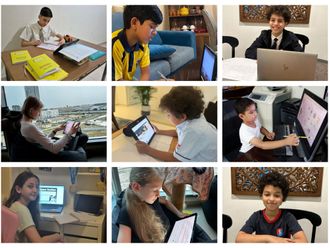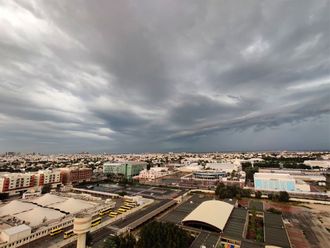Dubai: Children are more likely to be abused in school than at home, the latest child abuse survey by the Dubai Foundation for Women and children has found.
The study, which was conducted on students from 39 private schools across the UAE, revealed that 123 out of every 1,000 children in the schools are exposed to abuse or violence, while the percentage is lower in homes where 65 children out of every 1,000 are exposed to abuse.
A total of 4,111 students (50.6 per cent male and 49.4 per cent female), from grades 5 to 12 (aged 10 to 18) were selected at random for the sample survey. The results were revealed during a press conference held on Wednesday at the foundation’s headquarters.
The survey also showed that boys are the most vulnerable to abuse, whether at home (7.2 per cent) compared with girls (5.7 per cent) or at school (15.1 per cent) compared with (9.3 per cent) among girls.
Aisha Al Midfa, Programmes and Research Officer at the foundation, who revealed the results at the conference, said children of the middle level of education (grades 6-9) are the most vulnerable to abuse, whether at home or at school. This could be because the highest number of samples came from the middle level (48.5 per cent).
Afra Al Basti, Director-General of the Foundation, said the survey is important as it is the first of its kind in the UAE that tries to understand the magnitude of all forms and types of abuse that occur at home and school among Emiratis and residents.
Biggest national study
“This is the biggest national study as it has the biggest survey sample of children in the UAE, of both Emiratis and residents. It aims to help decision makers develop beneficial intervention and protection plans for children in the UAE.”
Although 29.7 per cent of students said they were hit at home or a belt was used on them and 37.8 per cent said they were screamed at in a violent and scary way at home, only 6.45 per cent (225) said they were abused when asked directly, and 93.55 per cent (3,698) said they weren’t abused.
The same was true in schools as 18.5 per cent of the students said someone in school had hit them with their hand or an object and 30.9 per cent said someone at school had embarrassed or humiliated them in front of others, but only 12.3 per cent (479) said they are abused and 87.7 per cent (3,428) said they weren’t.
Dr Fakir Al Gharaibeh, Associate Professor at the University of Sharjah, said there are many reasons for the different answers the students give when asked directly if they were abused. “In many cases the hitting or yelling was not meant to be abuse but was discipline. Another reason could be that children do not know how to differentiate between abuse and discipline.”
At home the father is more likely to be the abuser, according to the children surveyed (32.7 per cent), followed by the mother (25.4 per cent), big brother (16.8 per cent) and younger brother (11.1 per cent) respectively.
Psychological abuse
Psychological abuse was most prevalent at home with 23 per cent, followed by neglect at 22 per cent and neglect at 18 per cent and the least was sexual abuse at 15 per cent.
At school, psychological abuse was also the most prevalent with 29 per cent, physical abuse with 34 per cent. Sexual abuse was the lowest at 27 per cent.
Sexual abuse was the least common form of abuse. When students were asked if they were shown pornography or asked to show their private parts by someone at home, only 15 per cent said yes. The rate was higher at school with 27 per cent but still remained the least common form of abuse. Aisha said it is interesting to note that boys are more likely to be sexually abused at home and school than girls.
Witnessing violence (for example, watching adults/parents yell at each other or hit each other) was high, especially at home with 22 per cent, coming in second place after psychological abuse with 23 per cent).











